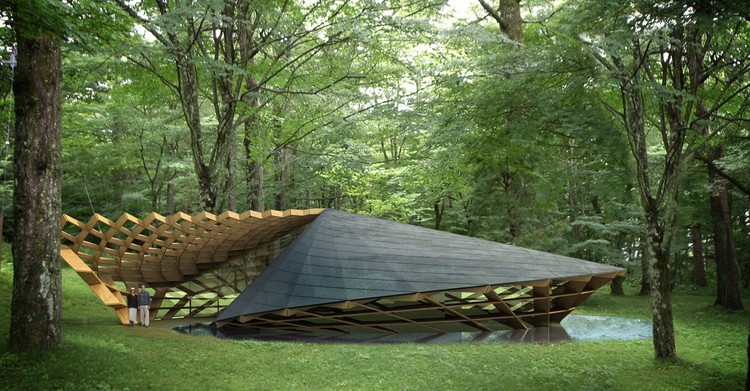
Reena Jana of SmartPlanet recently interviewed the award-winning, Japanese architect Hitoshi Abe on the lessons he has learned from the March 11, 2011 earthquake that destroyed his hometown in Sendai, Japan. Abe believes that the memory of the 9.0 magnitude earthquake that hit the coast of northeaster Japan, triggering a tsunami that sent waves as far as six miles inland must remain fresh in our minds. His goal is to educate everyday citizens around the globe, as well as future generations, on how to better cope with large-scale natural disasters. Currently, he is serving as a guest-curator for a travel exhibition entitled Moving Forward: Life After the Great East Japan Earthquake. This exhibit brings to life the haunting reality of the devastation through a series of large-scale photographs and photographic essays that reveal individual stories of survival immediately following the disaster. The exhibit commemorates the victims and struggles of the survivors, while highlighting the reconstruction and recovery efforts.
Continue reading for more.
In the interview with Reena Jana, Abe states, “It has become extremely clear that we have to “negotiate” with nature.” We must not be “overly confident” with our modern systems and understand their limitations in order to create a more disaster resilient society, not only within our built environment but within the social, political and economical systems that govern our societies. Understanding how the Japanese community formed an informal network to sustain themselves, as the large systems and infrastructure they typically relied on fell apart, may give us great insight into the possibilities of creating a more adaptable and disaster ready modern society.
Abe believes there must be a continuous effort amongst the design community to “share their collective knowledge of “best practices,” and post-disaster design studies and fundraising, in order to create a working knowledge base that will hopefully be able to streamline the process and procedure by which communities effected by disaster can begin to recover.”
Currently most reconstruction efforts are largely initiated by the government and driven by civil engineering. However, organizations such as Arch+Aid, a network of more than 270 architects supporting the reconstruction efforts, have formed in order to try and give cohesion to these efforts.
Many Japanese architects have also collaborated and donated their time to help rebuild. For example, this project is the product of the collaboration between Kengo Kuma, the Community of Sant’Egidio, Italians for Tohoku volunteer association, the Embassy of Italy in Japan, and Kuma Lab of the University of Tokyo. It is a proposal for a new meeting center for elderly people of the Rikuzentakata community. The project takes inspiration from the lotus leaf which is an organism that lives floating on the water. It symbolizes the fragile relationship between life and nature: it creates hope for the coming future when architecture will be designed respecting to nature and not against it. Furthermore local wood from Kasennuma –an area hit by tsunami too- will be used for the construction, and local carpenters will be asked to realize it.

The Community of Sant’Egidio has officially started a fundraising campaign involving charities from many nations. These funds will be used to finance the 220 square meter building that will be donated to Rikuzentakata community.

The preliminary project was donated by Kengo Kuma. This operation has a strong meaningful significance in the relationships of friendship and international cooperation between Italy and Japan and all the nations willing to contribute. The fragility of life needs to find safety through a stable house.
The project aims to reestablish faith in the balance between human beings and nature. It is an architecture meant as a place for re-energizing and finding joy in physical and spiritual reconstruction.
Location: Rikuzentakata, Iwate Principal use: Public Facility Site area: 1000 m2 Total floor area: 220 m2 Number of stories: 1 Structure: Timber frame Concept and Project by: Kengo Kuma and Associates: Jun Shibata, Kazuyo Nishida, Hiroaki Saito University of Tokyo, Kengo Kuma Lab: Matteo Belfiore, Salvator-John A. Liotta Organization: Comunità Sant’Egidio, Italians for Tohoku Endorsed by: The Embassy of Italy in Japan Structural engineer: Jun Sato Website: http://www.santegidio.org/
Read the entire SmartPlanet interview with Hitoshi Abe here.
The Moving Forward: Life After the Great East Japan Earthquake exhibit is on view at the Fowler Museum at UCLA until April 15th.
Reference: SmartPlanet, Fowler Museum at UCLA, Very Very Architecture Office





